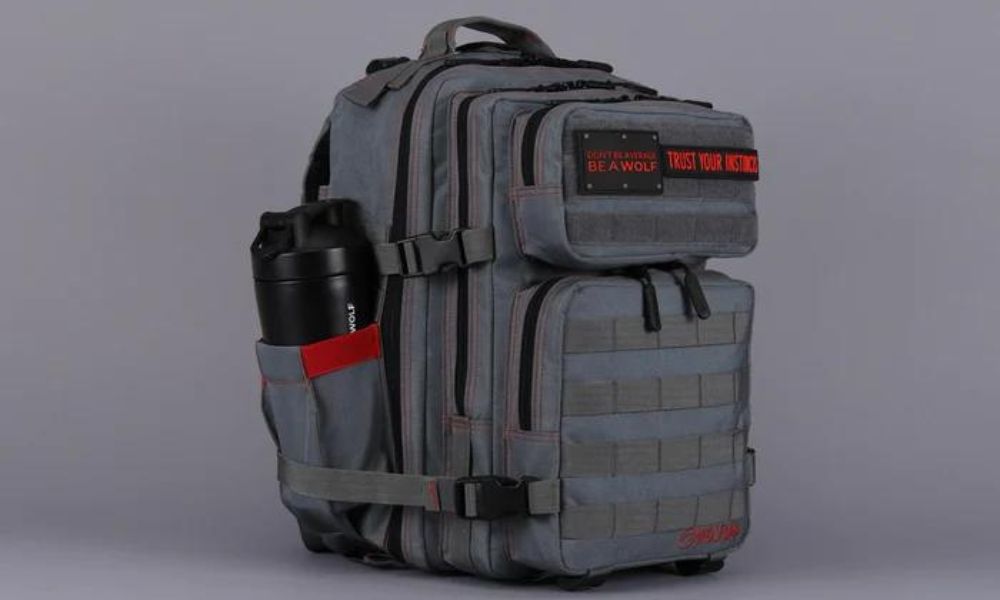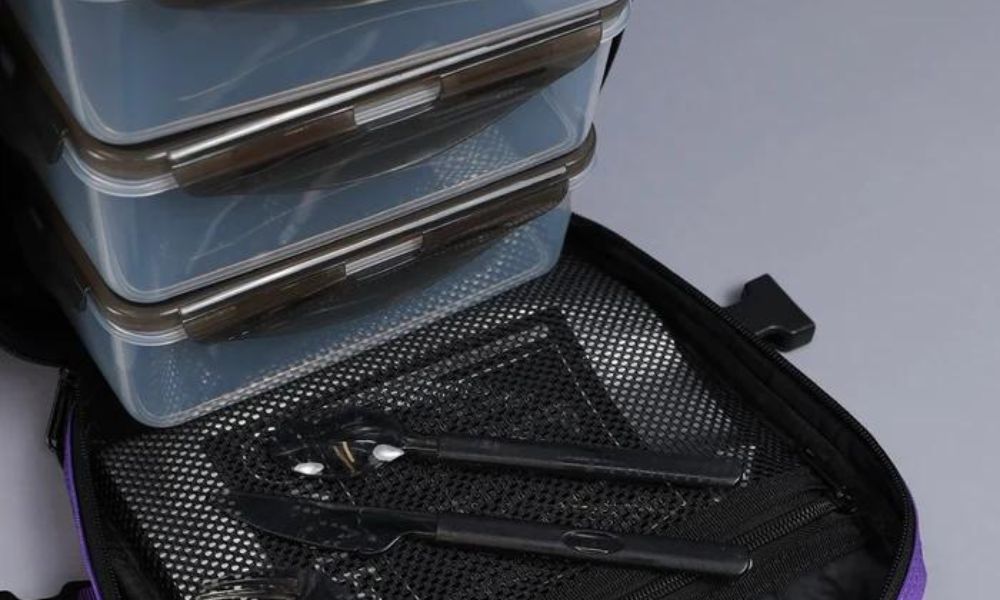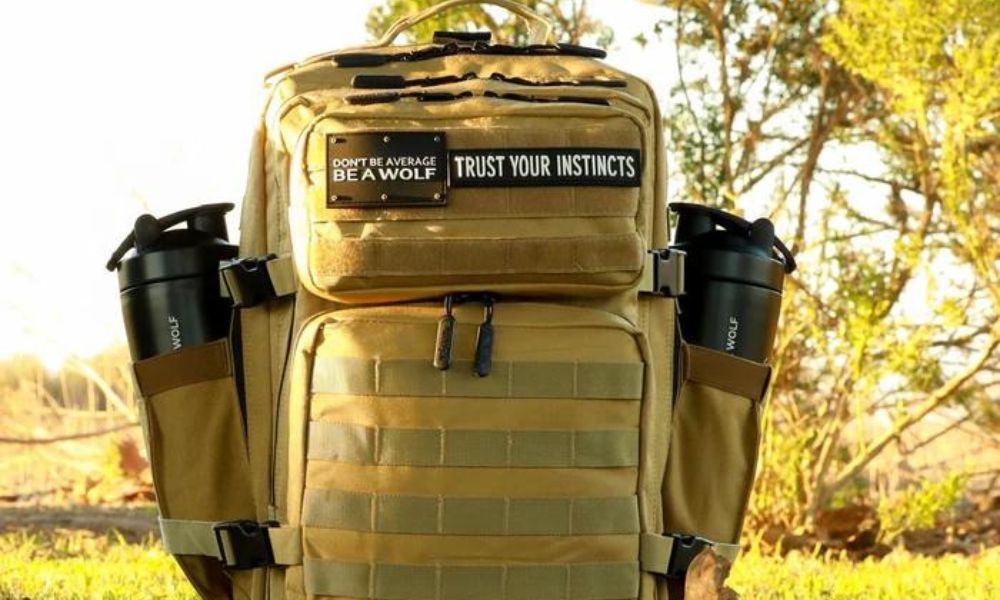When camping or hiking in the woods, it’s critical to include all your survival supplies in your tactical backpack. Your natural intuition may want you to bring every little thing, but you also do not want your spine to be barking at you. A backpack should maintain a balance between comfort and functionality, and knowing how to pack your tactical backpacker properly can help you find that equilibrium.
Know Your Wants & Needs
Before you pack your tactical backpack, it’s critical to differentiate your items between needs and wants. The inventory for your needs includes any requirements needed for basic survival. When packing a tactical backpack, you must have a worst-case scenario mindset, or you may forget something you’ll have a dire need for if you are in a grave situation. On the other hand, your wants are accessories you can live without, although you would love to include them with your essentials.
Must-Haves
Food & Water
Bring ready-to-eat snacks and meals to alleviate the stress of cooking things over an open flame. Sandwiches, protein bars, and jerky are examples of these. Consider taking dried fruits and nuts instead of fresh fruits, which may spoil quickly. You should also drink a liter of water every two hours you are trekking to stay sufficiently hydrated.
Hygiene
Although you may live with the animals for a few days, you don’t want to smell foul. You don’t need to bring your entire catalog of hygiene products, but you will want to keep your mouth fresh and body clean.
Cutting Tools
You’ll need a multi-purpose knife to make meals, construct a fire, and perform other tasks requiring a sharpened blade. You may also bring an axe to clear the vegetation and pitch the tent. These items, along with pepper spray and stun guns, can come in handy if you need to fend off an attacker.
Shelter
An adequate shelter is paramount if you want to survive in the wild. A weather-resistant tent gives you the best chances to stay comfortable while shielding you from tumultuous weather. The tent size depends on how many people are coming with you. If you’re flying solo, there’s no need to get a massive tent.
First Aid Kit
Safety should be your number one concern in anything you do, particularly if you’ll be in a rural place far from health facilities. When you experience burns, bee stings, or other mishaps, a first aid pack can help your well-being. There’s no need to settle for a kit you can buy from a retailer, considering you may construct your own first-aid kit with the items you feel are the most vital. Additionally, a smartphone and other navigational devices are helpful to have in the event of an emergency.
Lighting Supplies
As fun as it would be to build a fire like a neanderthal, it’s more efficient and less headache-inducing to pack backup lighting supplies—such as a lighter or fire-starting kit.
Use Best Practices
Formulating a strategy for packing your backpack gives you a chance to become a magician. Hopefully, you have the skills of David Blaine rather than George Oscar Bluth. Space is at a premium when you are packing, so you want to fill every centimeter of the available room.
The ideal approach to packing a tactical backpack is to pile everything you can into the middle compartment to build a strong foundation, then pack any remaining items along the sides. The goal is to pack your clothing and supplies as compactly as possible. Doing so will conserve space and keep objects from sliding about while in transit, decreasing the risk of damage to your equipment and more delicate personal possessions.
The primary purpose of a tactical backpack is to carry your gear as a holster does for a firearm. However, a holster isn’t beneficial if it’s difficult to grab the gun promptly. Similarly, a backpack isn’t doing you any favors if you cannot quickly retrieve the necessary items. Be sure to load and arrange your supplies in a manner that allows for simple and quick access.
Starting From the Bottom
Like every well-built home, the layout of a tactical backpack starts with building a solid foundation. The first step for building a foundation is to place heavy goods at the bottom of your backpack, utilizing padded straps or clothes as protection to avoid puncturing something on top.
The second step is to load your bag with soft towels, clothing, footwear, or other bulky things on top of the heavy items to further buffer the bottom. This buffer will provide additional room at the top of your backpack to secure your belongings.
The third step is to position mobility aids, such as glasses and inhalers, at the top of your backpack so they are readily accessible.
Remember to place liquids and similar items in leak-proof bags to keep them from spilling and causing a mess before zipping the pack shut.
The In-Betweeners
Now that the bulkier items have provided the base of a pyramid, you’re ready to form the middle with what you have left. The middle portion of a tactical backpack is the prime location for your food and water. Since the foundation and top layer cushion them, they won’t leak or spill everywhere. Additionally, you will rarely have a food or hydration emergency, so there’s no need to have them readily available.
Another item that should find its spot in the middle is your underwear. Putting underwear at the top may make it difficult to fasten the zipper because they could get caught in the zipper. Putting them in the middle adds an extra layer of padding, while the other items you place on top can push them down.
On Top of the World
The top portion of a tactical backpack is where you’ll put your miscellaneous items that don’t necessarily have a home. Personal safety should be your biggest concern during this stage, including materials that can identify you in an emergency. Instead of holding your wallet or purse with cash and your driver’s license or passport inside, you’re better off keeping all these items together in your tactical backpack. Other than identification, it’s best to keep medications at the top of the backpack. Don’t forget to include copies of your insurance or medical ID cards.
Around the Outside
Numerous tactical backpacks allow exterior attachments, such as equipment. These attachments are particularly beneficial if you have a large backpack and need to carry additional items. However, a tactical belt might be a wise addition if you want more options for carrying certain items. These belts can hold flashlights, knives, firearms, and other tools.
Knowing how to pack your tactical backpack properly ensures you have the bare necessities for any outdoor adventure while not straining yourself when hiking serene trails. WOLFpak’s 35L backpacks, paired with your new knowledge of proper packing techniques, can guarantee you have an unforgettable experience as you take in Mother Nature.

Read more

Make your backpack more effective and appealing to you by adding some personal touches and using these five ways to customize your tactical backpack.

Use these tips for getting started with meal prepping to ensure you have a fridge and freezer full of the yummiest nutritional food to last you the week.













Leave a comment
This site is protected by hCaptcha and the hCaptcha Privacy Policy and Terms of Service apply.